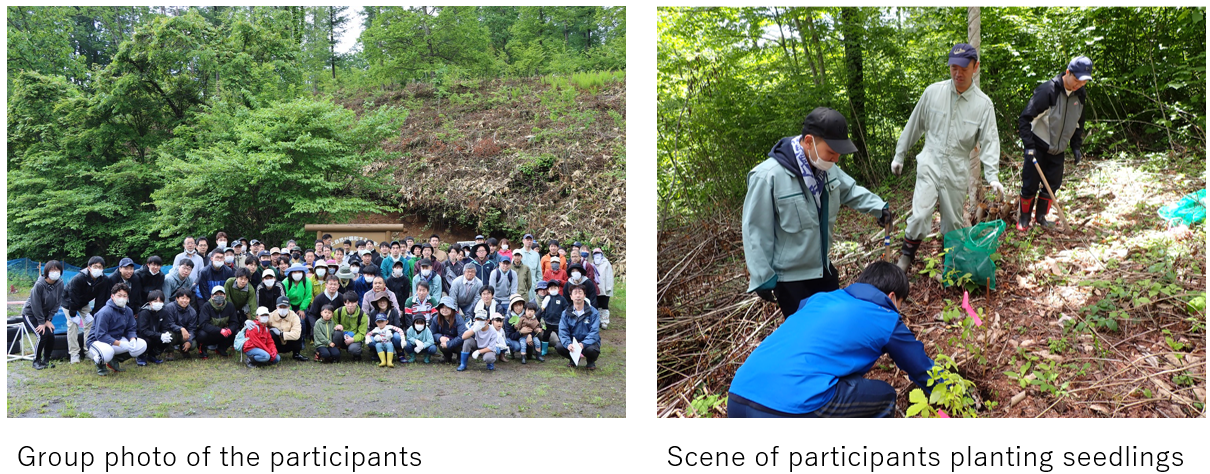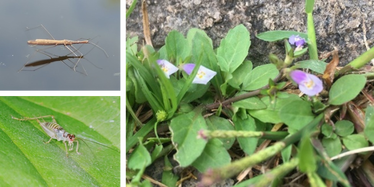
SHINKO ELECTRIC INDUSTRIES CO., LTD.

SHINKO ELECTRIC INDUSTRIES CO., LTD.
 Conservation of Biodiversity
Conservation of BiodiversityThe Shinko Group has the Environmental Policy to contribute to the creation of an abundant society through countermeasures for climate change, effective utilization of resources and conservation of biodiversity. Based on the recognition that "our business benefits from, as well as influences, biodiversity," we have established medium- to long-term environmental targets and are working on them. Globally, loss of biodiversity has become a pressing issue along with climate change. In order to halt the loss of biodiversity and create a sustainable society, we will reduce the negative impact of our business activities on ecosystems and promote biodiversity conservation activities.
In light of our dependence on and impact on biodiversity, we aim to conserve biodiversity, which is the foundation of a sustainable and prosperous society, and we have established the Guiding Principles for Biodiversity to collaborate with society in pursuing the ideal way for people to live in harmony with nature.
Guiding Principles for Biodiversity
- Practice conservation and sustainable use of biodiversity in our business activities.
- Contribute to creating a society that can achieve biodiversity conservation.
- Human resource development through biodiversity conservation.
Global Risks Report 2024, published by the World Economic Forum (WEF), lists "loss of biodiversity and ecosystem collapse" as the third most serious global risk in the next 10 years, and "natural resource crisis" as the fourth most serious global risk. Both of these risks have moved up the rankings since FY2023 and have increased in severity over the past year. The G7 2030 Nature Compact also agreed on the "Nature-Positive (nature revitalization)" goal of "halting and reversing biodiversity loss by 2030 to put nature on a recovery path," thus integrated action to realize "Carbon Neutrality (zero emissions of greenhouse gases)" as well as "Nature-Positive (nature revitalization)" is considered as crucial in the future.
In order to assess the impact of our business activities on biodiversity, the Shinko Group has conducted biodiversity risk assessments, including physical and reputational risks, at our domestic and overseas production sites, using the World Wildlife Fund (WWF) Biodiversity Risk Filter.
As a result of the assessment, it was confirmed that none of our production sites have levels of physical risk or reputational risk that are High or Very High.
At the same time, using the Integrated Biodiversity Assessment Tool (IBAT), we confirmed that there are no protected areas1 within a 3 km radius of any of the Shinko Group's production sites. We also consider our impact on ecosystems and are assessing water risk and water stress.
> Resource Circulation / Reducing Water Use / Response to water risks
We will continue engaging in activities that aim to reduce the negative impact of business activities on the ecosystem and help to realize a society in harmony with nature.
1 Protected areas: Areas essential for biodiversity conservation and serving as an assessment indicator of IBAT, including: categories Ia, - III in IUCN Management, Ramsar Convention Wetlands, UNESCO Parks, IBAs (Important Bird and Biodiversity Areas), Alliance for Zero Extinction Sites, and KBAs (Key Biodiversity Areas).
Assessment of Biodiversity Risk at Production Sites2 (FY2023)
2 Production sites
Japan:
Kohoku Plant, Wakaho Plant, Takaoka Plant, Arai Plant and Kyogase Plant
Asia:
KOREA SHINKO MICROELECTRONICS CO., LTD. (KSM)
SHINKO ELECTRONICS (MALAYSIA) SDN. BHD. (SEM)
3 WWF Biodiversity Risk Filter Criteria
4 WWF Risk Type "Scape Physical Risk"
5 WWF Risk Type "Scape Reputational Risk"
Reporting boundary: Shinko Group in Japan
Shinko and the labor union participate in the adopt-a-forest program promoted by Nagano Prefecture. Every year, employees and their families participate in forest maintenance work in the area around Lake Reisenji, which is owned by Iizuna Town.


In addition, starting in FY2021, we use the Nagano Prefecture Forest CO2 Absorption Assessment Certification System to visualize (quantify) the amount of CO2 absorption per year in the maintained forests.

6 Amount of CO2 absorbed by trees growing in area described in the footnote 7 in FY2023
7 Total area maintained, including area newly certified in FY2023 + previously certified area
Through these activities, we will strive to continue and contribute to biodiversity conservation activities in cooperation with local communities.
Our Kurita Sogo Center, located near Nagano Station, spreads out like an oasis in an urban area. Here, we continually conduct natural environment surveys.
In the natural environment survey conducted in FY2023, 152 species of plants, 93 species of terrestrial insects, and 22 species of aquatic organisms were found to inhabit the area, many of which were confirmed to be native species. However, a small number of alien species that threaten the ecosystem of the Kurita Sogo Center and the surrounding area were also found. We are exterminating and monitoring them as indicator species. We will continue our activities to improve biodiversity at the Kurita Sogo Center.


Living things at Kurita Sogo Center
We are striving to strengthen our biodiversity education and awareness activities so that each employee will understand the importance of biodiversity and the relationship between biodiversity and business activities. We want each employee to be able to take action in their work and daily life, beginning with what is familiar to them.
